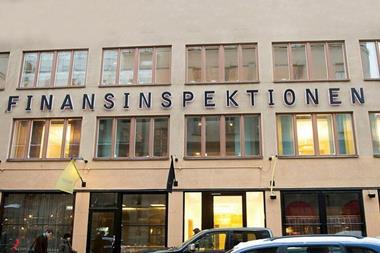In a recent welcome development, the
Cabinet Committee of Economic Affairs of India has allowed 100% foreign direct investment (FDI) in the construction sector and at the same time reduced the minimum threshold for FDI in real estate development from 100 acres to 25 acres of land or 50,000m2 of built area. The capitalisation norms for real estate development Special Purpose Vehicles with FDI have been retained at the previous levels of $10m (e8.3m), with the aim of preventing speculative and ‘vulture’ investments and also to avoid the involvement of small-time international operators without sufficient credibility.
These policy changes, if defined adequately, are certain to lead to a significant flow of foreign investment into real estate development in India, across the various property segments. The nature and extent of foreign funds that flow into the Indian market as a result of this development would have a widespread impact on the different aspects of the local market. The change to an automatic approval route from previous selective approval approach by the Foreign Investment Promotion Board will incorporate self-governance and greater
accountability on foreign developers. Moreover, the start-up time for projects would be quicker as a result of the procedures now becoming less tedious and bureaucratic.
The most fundamental change for India as a result of this relaxation would be increased availability of long-term, cheaper capital for real estate
development. Most international developers would now find it attractive to look at sustainable real estate development opportunities here, to exploit their ability to raise finance through their global relationships with international financial
institutions. A greater influx of capital would ease the liquidity conditions in the market and make more development finance available in the system, thereby improving stock availability and enabling exploitation of latent demand.
The availability of capital and technology from foreign players should also present opportunities for Indian financial institutions to participate more in real estate projects. We expect rapid growth in overall lending to the real estate sector in the near future.
Private equity investment has been around for a long time on the Indian landscape. Albeit
unorganised, private high net worth individuals and investment trusts of traditional family businesses have made considerable inputs of finance over the years. For the most part, however, a lack of
institutional support for such investment limited the size of deals and only provided for minor gap
funding to target-company management. The investment criteria and approach to running target companies also tended to be ad-hoc and lacking in professional expertise. In recent years, one
quantum change in this area came with the entry of professional firms, many of which had expertise in global emerging markets.
This has boosted the interest in India among
foreign investors tremendously. According to the PricewaterhouseCoopers report on global
private equity, India is the fastest growing market
in the world and the 12th biggest, ahead of
countries such as Israel and China. The growth
figures too have been astounding with the
compounded annual growth rate over the past five years hitting 82%.
To date, most investment by organised private equity players, both Indian and foreign has been concentrated in areas such as information
technology, biotech, pharmaceuticals and
manufacturing. Real estate, by and large, has been considered an alternate asset class and a risky
business associated with huge equity premiums. Also, while growth in the residential property
market was triggered by macro-economic events, commercial real estate in India is more closely entwined with the fortunes of the information technology and the business process outsourcing sectorss. Employment generation in the knowledge-based industries and labour market considerations have been the common thread linking these two sectors.
Capital flows into commercial property in 2004 increased by more than 40% over the previous year, leading to record levels of new office development. In spite of this, higher absorption has helped to
stabilise vacancy rates and maintain stimulus for sustained growth.
The fact that foreign investment was until now prohibited in most real estate categories elicited limited interest. However, with restrictions to
foreign investment largely removed lately investor interest has rebounded owing to two key
developments, one regulatory and the other to do with property market fundamentals.
The second development that has the ability to boost venture capital and private equity flow into real estate has to do with improving fundamentals of the sector. Through 2004, demand improved in all sectors of the real estate market, most notably in residential and commercial real estate. The
build-up of capital was the highest in residential property as housing affordability received a boost from rising incomes and lower financing costs. Going forward, growth of the sector is likely to depend upon developments in the interest rate
environment. For the moment though, positive
signals from the Indian Central Bank on keeping interest rates low and fighting inflation pressures have stymied fears of a downward trend in property prices.
The national property cycle too, for most part, maintained its position in the growth to equilibrium phase. Increased capital flows balanced by high office space absorption have been compelling
reasons for lower investment yields on Grade A income property. From a high of 16% in early 2000, commercial property yields have reduced to levels of 11-12% across markets. An increasing volume of research proves that this is a structural trend (changing over a long term) rather than cyclical (changing from year to year). Key structural drivers of yields have been:
n A lower 10-year bond rate that has moderated required returns of investors;
n Lower expectations of stock market returns;
n Continued weight of money from the
institutional/managed funds sector;
n Lower risk premiums on account of the emerging tenancy profile, skewed in favour of multinational corporations.
In spite of lower cash on cash yields on income properties, it is worth mentioning that investment in the office property sector still offers leveraged returns in the range of 17-20%. There is hence no doubt that the market provides ample arbitrage opportunities backed by strong fundamentals. It is therefore not surprising that the commercial
property sector is increasingly on the radar of global private equity funds, most of which have an established presence in Asia. The scale of the
market, with more than 80m ft2 set for absorption over the next three years is again a key factor
necessitating their presence in the country.
Some of the opportunities that are expected to
garner significant interest include:
n Group housing and large-scale township projects in both metropolitan and secondary towns/cities, provided they cater to adequate demand and also offer clearly defined exit over a three- to six-year horizon. The expected cash on cash returns vary between 17% and 22%;
n IT Park projects in suburban business districts that are in their initiation or early growth to
equilibrium stages. The expected cash on cash returns vary between 20% and 25%;
n Hospitality, leisure & entertainment projects in major metropolitan and emerging business
locations. Based on past private equity deals in the market, the expected cash on cash returns are in excess of 25% owing to the operating risk
characteristics of such investment.
Chan Chakravarti is joint managing director of Cushman & Wakefield, India
US firm in trailblazing joint venture
US-based developer, investor and fund manager Tishman Speyer Properties has been a trailblazer into India, launching a joint venture with a local finance house to develop real estate.
It has formed TSI Venture with ICICI Venture Funds Management Company, India’s largest private equity funds management company and a subsidiary of India’s second largest bank.
The new company, a 50/50 joint venture will develop commercial office, residential and retail properties throughout India. The joint venture is the first in India involving a major US real estate development company.
ICICI Venture, a wholly owned subsidiary
ICICI Bank, is raising capital to target the
real estate sector and has launched a $250m (e205m) fund focused for investment in
real estate in India. All of its activity in real estate approved for foreign direct investment will be conducted through the new joint
company.
Katherine Farley, a senior managing director at Tishman Speyer, who is responsible for the firm’s activity in emerging markets, will oversee its involvement in TSI Venture.
“India is clearly one of the most rapidly
growing markets and a leading destination for foreign direct investment,” said Farley. “We are delighted to be teaming up with such a strong prestigious and knowledgeable local partner, and we are confident of the long-term success of the venture.
“We are particularly pleased to have the opportunity to build a long-term presence in India by developing world-class properties and furthering the country’s economic
development.”
The joint venture company intends to build a geographically diverse portfolio with a national presence that includes the largest urban and suburban markets in tier-one and tier-two cities. The company is currently
evaluating sites in a variety of cities, including Mumbai and Bangalore.
Renuka Ramnath, the head of ICICI
Venture, said: “We believe TSI Venture will be a powerful force in India’s real estate industry, identifying and pursuing exciting projects that will complement and advance India’s
continuing growth and progress.”












No comments yet